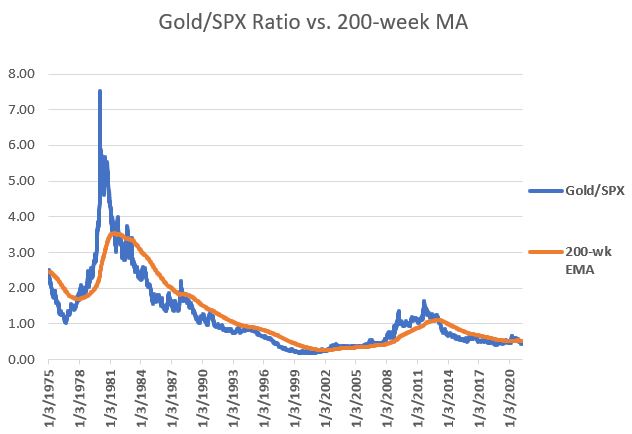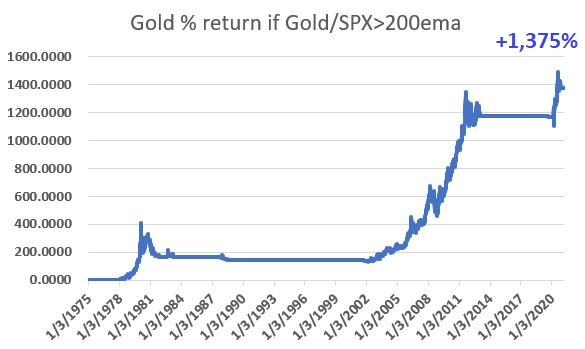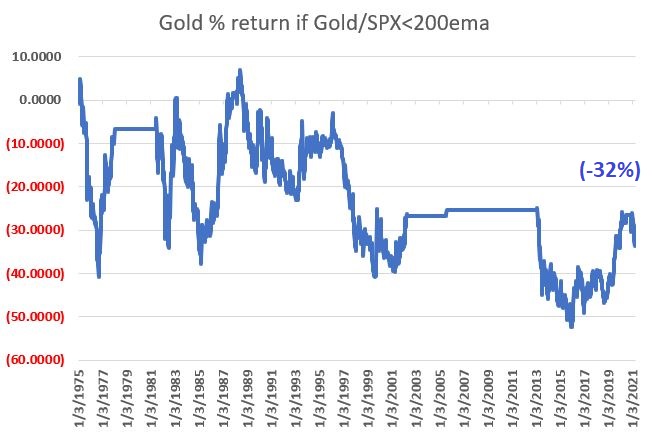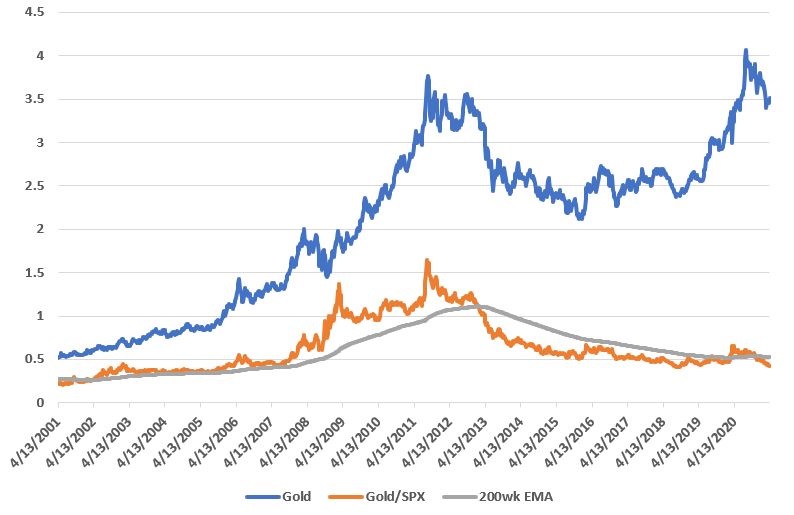A Useful Clue Regarding When to Own Gold
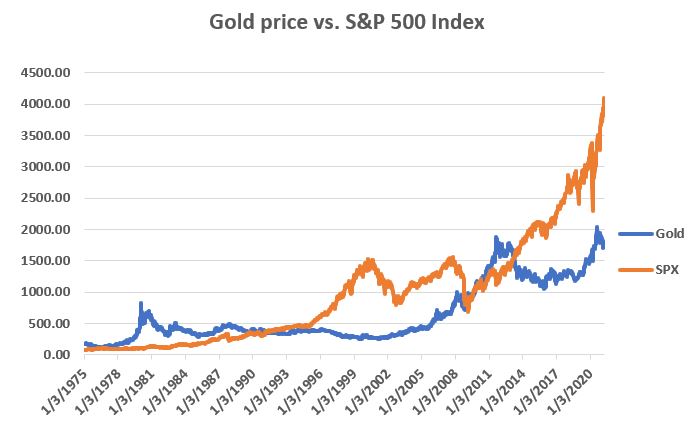
There is a lot of chatter these days about the "impending huge rally in gold (and other related stocks and precious metals)". With the expansion of U.S. government spending and the national debt in the last 12 months, the talk of "inevitable hyperinflation" flows pretty freely. And maybe it will in fact all play out that way - with gold, silver, and mining stocks all experiencing explosive rallies. I am not saying that it won't.
But gold has some proving to do first.
When you strip away all of the seemingly endless rhetoric, the reality is that - as with every other tradable - there is a time to own gold and a time not to own gold. What follows is one attempt at discerning when the time is right - or not right - to own gold.
The Gold/SPX Ratio
The method I am about to discuss I learned from material presented by Mark Ungewitter, Senior Vice President and Senior Investment Officer of Charter Trust Company in Concord, NH. Although we have never met, I have developed a great respect for his work. The indicator we will use is calculated as follows:
A = Weekly closing price for gold bullion (I use gold futures spot-month data)
B = Weekly closing price for S&P 500 Index
C = (A / B)
D = 200-week exponential moving average of C
E = (C - D)
In essence, E is simply the latest Gold/SPX ratio compared to its own 200-week exponential average.
Interpretation is fairly simple:
- If E > 0 then favorable for gold
- If E < 0 then unfavorable for gold
The chart below displays the price of gold (blue line) and the price of SPX (orange line) since 1975. Note that they frequently appear to move in different directions.
The blue line in the chart below displays Variable C (the Gold/SPX ratio) and the orange line displays variable D (the 200-week exponential moving average of C) since 1975. Our theory is that it is bullish for gold when the blue line is above the orange line and vice versa.
Does this form of analysis actually offer investors any useful information? Let's look at the actual performance of gold during the two different scenarios and see.
The chart below displays the cumulative growth in the price of gold when the Gold/SPX ratio is ABOVE its 200-week EMA.
The chart below displays the cumulative growth in the price of gold when the Gold/SPX ratio is BELOW its 200-week EMA.
The table below displays the cumulative performance for gold based solely on the status of the method described above from January 1975 into April 2021.
Current Status
The chart below displays the last 20 years of data.
- Blue line = Gold / 20 (to bring it to scale)
- Orange line = Gold/SPX ratio
- Grey line = 200-week EMA of Gold/SPX Ratio
For most of 2002 into early 2013, the Gold/SPX ratio was above its 200-week EMA, during which gold staged a significant advance. The ratio trended mostly lower before turning bullish for gold at the end of February 2020 and gold rallied roughly 19% before the ratio turned bearish for gold in November.
At present, the Gold/SPX ratio remains below its 200-week EMA.
Does this mean that gold cannot and/or will not rally anytime soon? Not at all. It simply means that some improvement in the relationship between the performance of gold and the performance of the S&P 500 Index must occur BEFORE this particular indicator once again favors gold. This reversal of fortune could happen very quickly if gold were to pop and/or if stocks were to swoon.


